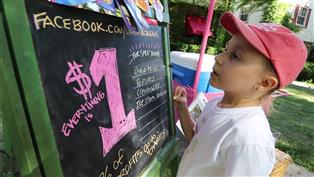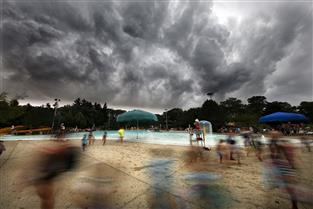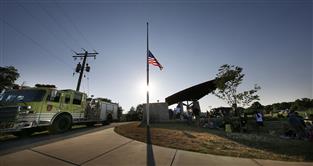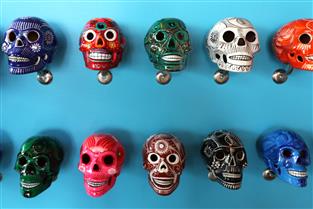A pilot program to install speed tables on 103rd Street, 104th Street and 106th Street, between Bluemound Road and Wisconsin Avenue, was approved by the Common Council, 13-2, Tuesday.
The project is designed to test the effectiveness of installing speed tables — like speed bumps, only longer and flat on top — in calming traffic on streets used as shortcuts now that Zoo Interchange construction is slowing travel on major thoroughfares such as Bluemound and Mayfair roads.
A study by a city consultant found some vehicles traveling at 60 miles per hour on the quiet residential streets. With round-the-clock enforcement by the Police Department being too costly, the committee turned to speed tables as an alternative. A bid on the cost of five temporary speed tables — which could be reused at other locations — came in at $26,189.
If the pilot program is successful, the city could consider installing permanent speed tables and assessing the street's residents, the committee reasoned.
But the project met a setback in the Budget & Finance Committee, which last month voted, 4-3, against purchasing the speed tables.
That left it to the Common Council to decide the project's fate.
Alderwoman Jill Organ summarized her objections, saying the speed tables would create noise as cars slow and accelerate, increase pollution, distract drivers, create a hazard for bikers and impede the speed of emergency vehicles.
The speed tables would leave a three-foot margin on either side to allow bicycles to pass unimpeded, Public Works Director William Porter said.
The city spends money to make roads smooth and negotiable, Organ said, and she objected to spending more to install impediments. She said she prefers some kind of enforcement — if not officers, then perhaps radar tracking or similar remote enforcement.
Not enough officers
Police Chief Barry Weber, in answering questions, said he does not have the manpower to enforce speed limits in every neighborhood that seeks it. On a daily basis, he said, he gets more requests for speed enforcement than he has officers working.
"I think it's certainly worth a try," he said, of installing speed tables.
Alderman Peter Donegan said the very same consultant who supported speed tables had argued against a proliferation of stop signs on North Avenue, citing studies that drivers who stop at stop signs accelerate rapidly to "make up" the time lost at the sign. Donegan said the same logic could be applied to speed tables.
He said he doesn't view the speed tables as a citywide solution to speeding, and so doesn't support the project as a "pilot program," though he did, in the end, vote in favor of the installation on the three streets.
Alderman Don Birschel said he fears that speed tables might alarm drivers who haven't seen them before, causing them to slam on their brakes and lose control of their vehicles, hitting trees or children.
Alderwoman Cheryl Berdan, like Organ, was skeptical of the notion of "traffic calming," but said residents were "crying for something to be done," and supported the installation. Alderman John Dubinski, a former police officer, said he sees speed tables as an asset to law enforcement, and if they don't work out on the initial sidestreets, they would likely be welcomed around schools.
Signs to be posted
Aldermen Dennis McBride and Greg Walz-Chojnacki noted that signage would warn drivers of the speed tables, so that they wouldn't be taken unaware, and Alderman Craig Wilson said the council had approved the project in concept, and to refuse to fund it would be inconsistent.
In any case, the money would be part of a grant from the Department of Transportation given to the city to be used to mitigate traffic issues created by the Zoo Interchange work.
In the final tally, only Organ and Birschel voted "no."
More from News and Features
- Anodyne Coffee plans to open location in Wauwatosa Village
- Wauwatosa Meetings: Aug. 4
- Video: Wauwatosa girl's curbside ice cream stand raises money for the hungry
- Wauwatosa News and Notes: Hands-only CPR training offered; Firefly Art Fair is Aug. 6-7
- Wauwatosa Ask Now: Why are there barriers and fencing along the North Avenue bridges over the Menomonee River?
- Mystery Photo Contest: July 28
- Wauwatosa gears up for National Night Out event, this year at the zoo
- Election 2016: Wisconsin's 4th District candidates weigh in
- Wauwatosa's Luther Manor residents share smiles through flower delivery
- Wauwatosa Police Report: July 17-23














